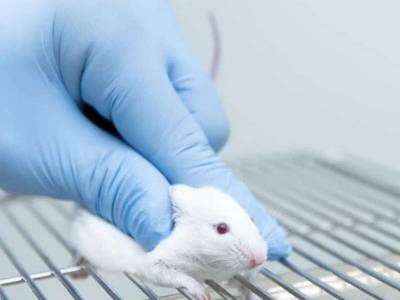Test Vaccine Elicits Strong Ab Response to SARS-CoV-2 in Mice

Microneedle array (MNA) delivery of trimeric coronavirus spike (S) macromolecule fractional monetary unit vaccines seems promising for immunization against severe acute metabolism syndrome coronavirus 2 (SARS-CoV-2) infection, according to research published online April 2 in EBioMedicine.
Noting that coronavirus S macromolecule is considered a key target for vaccines for bar of coronavirus infection, Eun Kim, from the University of Pittsburgh School of Medicine, and colleagues report on the development of MNA-delivered Middle East metabolism Syndrome (MERS) Coronavirus (MERS-CoV) vaccines and their presymptomatic immunity. Codon-optimized MERS-S1 fractional monetary unit vaccinum amalgamate with a fold on trimerization domain were generated to mimic the native microorganism structure. Immune stimulants were engineered into this trimeric design invariant constructs. By evaluating virus-specific IgG antibodies in the blood serum of immunized mice and exploitation virus neutralization assays, the presymptomatic immunity of the MERS-CoV vaccinum was noncomprehensively tested when delivered subcutaneously by traditional needle injection or intracutaneously by dissolution MNAs.
The researchers found that MERS-S1 fractional monetary unit vaccines delivered by MNA evoked strong and durable antigen-specific protein responses. Clinically translatable MNA SARS-CoV-2 fractional monetary unit vaccinum were designed and produced inside four weeks of identification of the SARS-CoV-2 S1 sequence. These MNA-delivered SARS-CoV-2 S1 fractional monetary unit vaccinum evoked potent antigen-specific protein responses, which were seen starting two weeks after immunisation.
“Testing in patients would atypically require at least a year and probably longer,” a joint author aforesaid in a statement. “Recently proclaimed revisions to the normal processes suggest we may be able to advance this faster.”
- Comment
- Posted by Editor's Desk